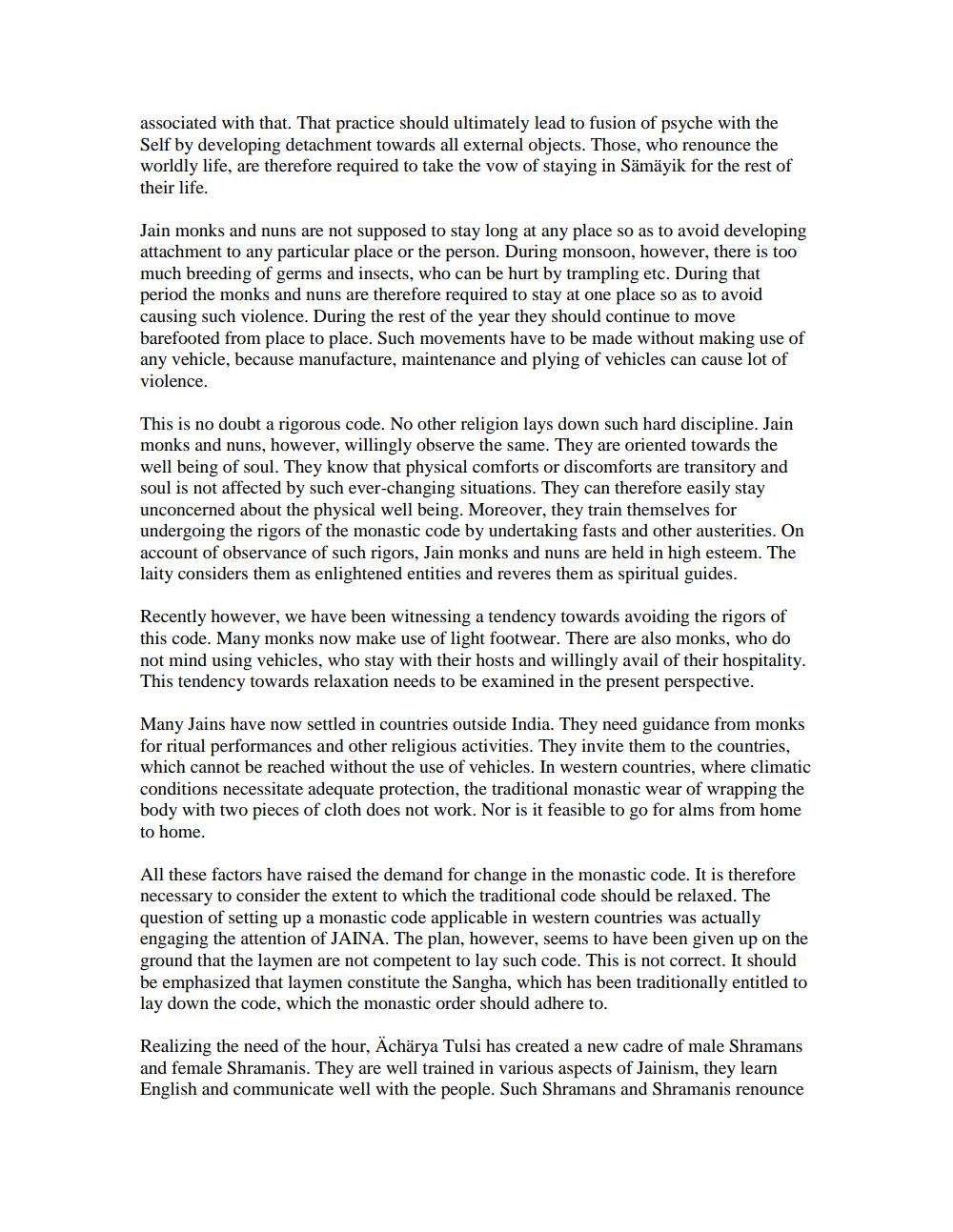________________
associated with that. That practice should ultimately lead to fusion of psyche with the Self by developing detachment towards all external objects. Those, who renounce the worldly life, are therefore required to take the vow of staying in Sämäyik for the rest of their life.
Jain monks and nuns are not supposed to stay long at any place so as to avoid developing attachment to any particular place or the person. During monsoon, however, there is too much breeding of germs and insects, who can be hurt by trampling etc. During that period the monks and nuns are therefore required to stay at one place so as to avoid causing such violence. During the rest of the year they should continue to move barefooted from place to place. Such movements have to be made without making use of any vehicle, because manufacture, maintenance and plying of vehicles can cause lot of violence.
This is no doubt a rigorous code. No other religion lays down such hard discipline. Jain monks and nuns, however, willingly observe the same. They are oriented towards the well being of soul. They know that physical comforts or discomforts are transitory and soul is not affected by such ever-changing situations. They can therefore easily stay unconcerned about the physical well being. Moreover, they train themselves for undergoing the rigors of the monastic code by undertaking fasts and other austerities. On account of observance of such rigors, Jain monks and nuns are held in high esteem. The laity considers them as enlightened entities and reveres them as spiritual guides.
Recently however, we have been witnessing a tendency towards avoiding the rigors of this code. Many monks now make use of light footwear. There are also monks, who do not mind using vehicles, who stay with their hosts and willingly avail of their hospitality. This tendency towards relaxation needs to be examined in the present perspective.
Many Jains have now settled in countries outside India. They need guidance from monks for ritual performances and other religious activities. They invite them to the countries, which cannot be reached without the use of vehicles. In western countries, where climatic conditions necessitate adequate protection, the traditional monastic wear of wrapping the body with two pieces of cloth does not work. Nor is it feasible to go for alms from home to home.
All these factors have raised the demand for change in the monastic code. It is therefore necessary to consider the extent to which the traditional code should be relaxed. The question of setting up a monastic code applicable in western countries was actually engaging the attention of JAINA. The plan, however, seems to have been given up on the ground that the laymen are not competent to lay such code. This is not correct. It should be emphasized that laymen constitute the Sangha, which has been traditionally entitled to lay down the code, which the monastic order should adhere to.
Realizing the need of the hour, Acharya Tulsi has created a new cadre of male Shramans and female Shramanis. They are well trained in various aspects of Jainism, they learn English and communicate well with the people. Such Shramans and Shramanis renounce




